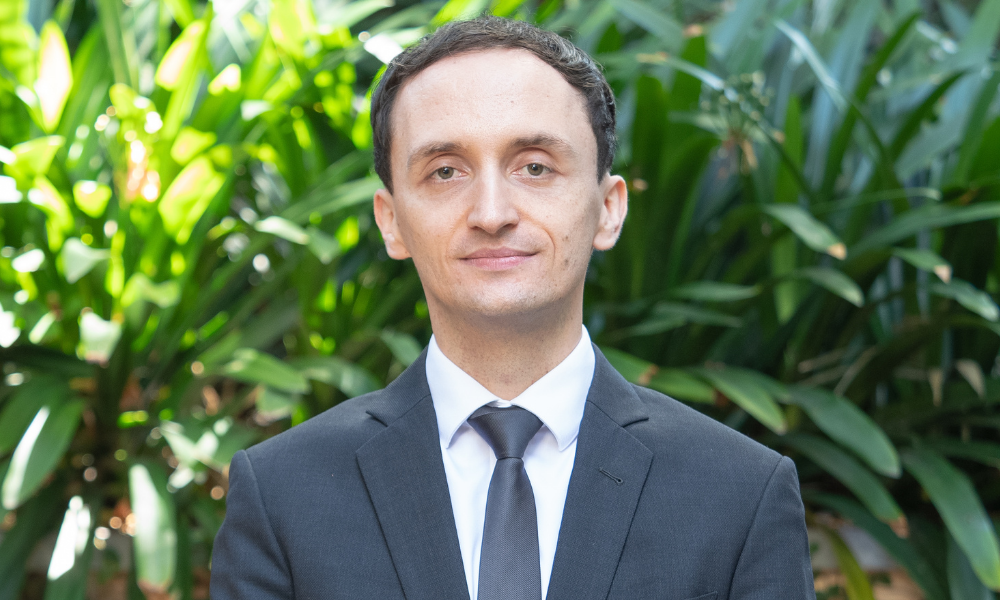Economist examines the risks

In the current environment of falling unemployment and robust growth, despite inflation pressures, the country is not falling into stagflation, a bank economist says.
But a number of current and emerging risks could weigh on growth, for example, the Russia-Ukraine war, lockdowns in China, new COVID-19 variants and lower household spending.
St. George Bank senior economist Jarek Kowcza (pictured) describes “stagflation” as a combination of inflation and stagnation.
It occurs during a period of high unemployment and inflation, and slow economic growth.
Inflation, measured by the consumer price index, rose 2.1% over the March 2022 quarter (up 5.1% annually), the biggest annual rise in almost 21 years.
Given the level of economic growth and the current strength of the labour market, the country isn’t currently in a stagflation environment – the “base case” is strong growth over 2022, Kowcza said.
Unemployment, currently 4%, is expected to fall below 3.5% this year – the lowest rate since the 1970s.
Wages growth is expected to increase over the year and into next year, he said. ABS Wage Price Index data released on Wednesday shows wages grew by 0.7% over the March quarter of 2022 (2.4% over the year to the March quarter). Wages growth was “below consensus expectations” of 2.5%, Kowcza said.
In what could be deemed an unwanted side effect of monetary policy, tools used to curb inflation (such as increases to the official cash rate), typically weigh on growth and can give rise to higher unemployment.
The RBA hiked the cash rate 25 basis points to 0.35% in May – the first rise in almost 12 years. Westpac Group is forecasting more rate hikes to come, starting with a 40-basis point rise in June, and a 25-basis point rise in July. At the end of the year, the cash rate would be 1.75%, rising to 2.25% by mid-2023.
Read more: Has rampant inflation pushed up interest rates?
“The reason why stagflation can be so complicated is you’re trying to manage two problems at the same time but the tools policymakers have at their disposal can effectively only manage one and can sometimes have the opposite effect on the other problem,” Kowcza said.
If further rate rises were to tip the scales towards stagflation, households may find it difficult to find a job and to maintain their standard of living.
“There are a few challenges that households face including that cost-of-living pressures are increasing and their living standards are being negatively impacted by higher inflation but at the same time unemployment is elevated and wages growth is likely to be low,” Kowcza said.
While stagflation is not on the cards, what are the triggers or “headwinds” that could weigh on growth, representing a risk to the economy?
Developments in the Russia-Ukraine war could cause current domestic and global uncertainty to rise and push up commodity prices, particularly oil, wheat and other foods.
Renewed lockdowns in China as a result of COVID-19 could impact demand from the Chinese economy and affect supply of goods.
There is also the ongoing threat of new COVID-19 variants and supply-chain disruptions continuing for longer.
“All of these factors do mean we could see lower growth and higher inflation than we currently expect,” Kowcza said.
Currently, inflation is expected to increase further and remain elevated this year before easing in 2023.
“If inflation continues to be elevated and higher than we expect, there’s a risk that households would reduce their spending and that might flow through to slightly lower growth,” Kowcza said.
Recent figures show falls in consumer sentiment over recent months, reflecting cost of living pressures for households and concerns around future interest rate rises. Lower household spending would flow through to lower economic growth, he said.
Turning to the housing market, since December 2019 house prices have jumped by almost 30%, increases spurred by higher demand, low interest rates and stimulatory policies, Kowcza said.
Read more: Big bank slashes housing outlook
During the pandemic, many households upgraded their homes, with the ability to work remotely and move outside of central cities, pushing up demand – and house prices
“What we’ve seen over the past 12 months or so is worsening affordability has been impacting the momentum in the housing market. We’ve also seen fixed interest rates increase, and more recently, the cash rate increase, the prospect of interest rates weighing on housing market sentiment, particularly in areas where affordability was stretched,” Kowcza said.
There is now a “two-speed market” where more affordable cities are faring better than less affordable ones.
“We’ve seen growth continue to slow across the country in general, and [turn] negative over recent months, [in Sydney and Melbourne] in particular,” Kowcza said.
Momentum in the housing market is expected to continue to slow this year. As interest rates increase, house prices are expected to fall over the rest of this year and over 2023 and 2024. But whilst growth is expected to fall, house prices are expected to settle at relatively high levels.
“Overall, we’re expecting prices to continue to slow and growth to turn negative over this year and over the next couple of years,” Kowcza said.
During the pandemic, households were able to build a savings buffer, helping to shield them from future interest rate rises.
Overall, households are in a good position to manage higher interest rates, Kowcza said. RBA securitisation data suggest the median excess payment buffer for owner-occupiers with a variable rate mortgage was around 21 months’ worth of scheduled payments in February 2022.
“This is a significant increase since the start of the pandemic, when that same buffer was around 10 months,” Kowcza said.
If interest rates were to increase by 200 basis points, current excess payments would be equivalent to just under 19 months of scheduled payments, the RBA said.



